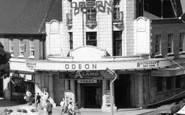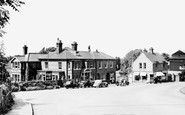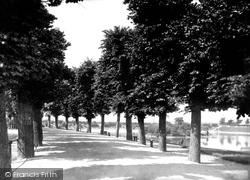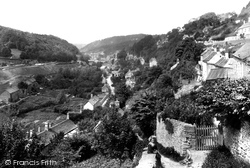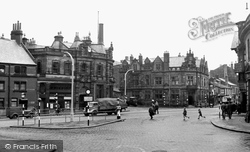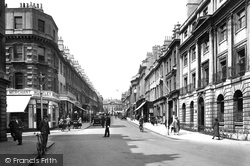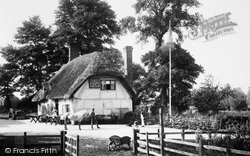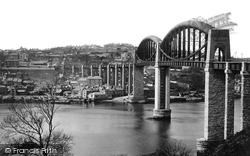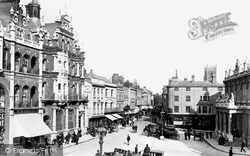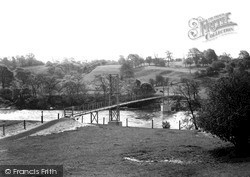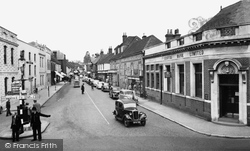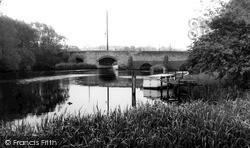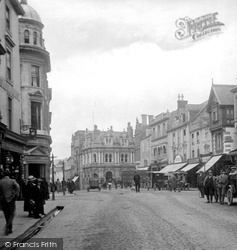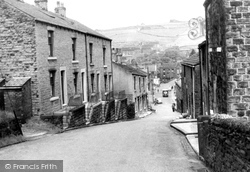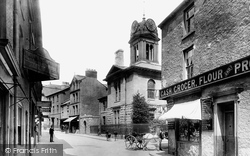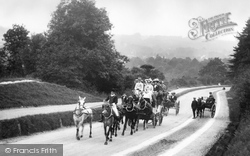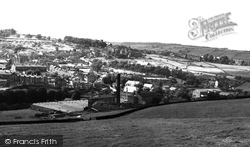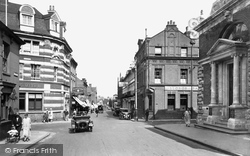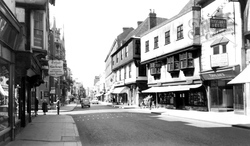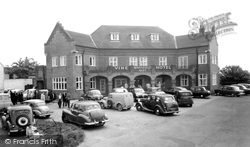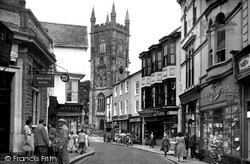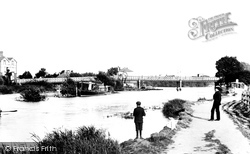Places
3 places found.
Those places high-lighted have photos. All locations may have maps, books and memories.
Photos
68 photos found. Showing results 821 to 68.
Maps
12 maps found.
Books
15 books found. Showing results 985 to 15.
Memories
7,562 memories found. Showing results 411 to 420.
Pontypool Town Centre
I lived in Upper Bridge Street and remember a few of the shops in town, I think! On the corner of Upper Bridge Street and the Bell Pitch was Franketti's fish shop with an awesome Art Nouveau till and free chips if you took ...Read more
A memory of Pontypool in 1960 by
Cofton Farm Camp Site
'Eee, when I were a lad'....... in the 1950's my dad and I would get the bus from Exeter to Dawlish and camp for a week at Cofton Farm, using a little WWII army-surplus 2-man ridge tent. My elder brother was in The Scouts, and ...Read more
A memory of Starcross by
Living In Melrose Ave, Willesden Green In 1950s
Hi, my name is Liz Ely (maiden name O'Connell) and I was born in Melrose Ave, Willesden Green in 1953 and I still live in the same house. I remember doing my mother's shopping in Sainsburys in ...Read more
A memory of Willesden in 1953 by
The Day We Set Earith On Fire
Well . . . not all of it! My dad was enlisted USAF stationed at Alconbury 1959-1960 and he found us a place on High Street that we shared with a number of other people. I believe it was one of the first three ...Read more
A memory of Earith in 1960 by
Childhood Memories Buckland Wharf
My Aunt Maud and her husband Alf lived in the last council house on the road to Buckland Village. Their son, Gordon Worrell, lived with his wife Winnie in the little row of cottages facing out on to ...Read more
A memory of Buckland by
My Early Years In Brynteg
I was born at 1 Cilcain Grove, Brynteg in 1935 to Peter Price Davies and Kitty Davies with my brother David and sister Joan. I went to the junior and secondary schools before going on to the Wrexham Technical ...Read more
A memory of Brynteg in 1940 by
A Lovely Place To Grow Up!
I was born in Arnold Avenue, just five minutes walk from the George pub, which was handy later on in my life. Also the post office opposite the pub, which was owned by Mr & Mrs Fit-Simons, who used to have rows of clear ...Read more
A memory of Meopham in 1956 by
Top Rank
I can remember very vividly going to Top Rank on a Saturday morning with my friends. We all went to Francis Coombe Secondary School. We all had so much fun dancing on these Saturday mornings... loved it...The memories of this and all ...Read more
A memory of Watford in 1968 by
My Childhood Of Old Bracknell Farm
Hi Peter, I remember the Thompkins was it the baker or was that the Cheneys? Joe Smith was the newsagent who used to treat the kids to a summer outing by train every summer. We used to get a new florin and a bag ...Read more
A memory of Bracknell in 1949 by
Roxy Picture House
I too, have fond and happy memories of the Roxy. I was born just down the road in Garnet Street in 1938 and went to Barkerend School leaving in 1953. I remember on a Saturday morning going with a few mates, we would take it in ...Read more
A memory of Bradford in 1948 by
Captions
2,501 captions found. Showing results 985 to 1,008.
North Walk was destroyed when the Lynton and Barnstaple railway came through in 1898. Subsequently, a road was built linking The Strand with the end of High Street.
The Frome Valley, dotted with mills and with the Thames and Severn Canal running through it, has long been a centre of industry. Chalford itself stands on the steep north bank.
The Circus, in the town centre, is where five roads meet. It has the usual mixture of banks and public houses on its corners.
Redditch town centre occupies high ground near the northern end of the prehistoric Ridgeway.
Built in 1782 to designs by Thomas Baldwin, Somersetshire Buildings remain the most elegant and ornate in the street; the bowed centre house is a total contrast to the regular flat fronts of the other
On the east bank, beyond the bridge, this medieval inn is noted for its 'cruck' construction, the large curved timbers in the gable wall, and for the fact that Jerome K Jerome commends it in 'Three Men
Brunel's celebrated masterpiece across the Tamar estuary made the first direct rail link between Cornwall and the rest of England when it was opened by Prince Albert in May 1859.
On the left is the red brick and stone Lloyds Bank building, with its fretted skyline, while to the right is the neo-classical Post Office, built in 1881.
This small thatched building, with its telegraph connection standing alongside, faces towards the sea.
Known locally as Dinkley Bridge, this elegant suspension bridge across the River Ribble was opened on 10 October 1951.
Note the old signpost beside him, indicating that Fareham and Portsmouth are 8 and 16 miles away and Eastleigh and Winchester 6½ and 10½ miles. Further down the High Street are the gas showrooms.
This view of the bridge was taken from near Islip House, on the west bank. In 1795, the medieval bridge was seriously damaged by floods and five of its nine arches were washed away.
The bustling centre of Truro is paved with granite setts, and running water flows in the gutters. Barclays Bank dominates the west end, while Lemon Street can be seen emerging on the extreme left.
On the Wraysbury bank, near to where we see the boathouse of W Hanes and Sons, there once was a wharf where iron ore was landed for refining at a local mill before being taken to London.
Delph and Dobcross were two of the principal villages within Saddleworth.
A pony and trap stands outside the grocer's, where 'finest quality flour' was 1s 3d, 'marvellous flour' was 1s 2d and 'splendid flour' was 1s 0d.
A party, dressed in their finery, with the ladies in large flowery hats, are on an outing on a coach owned by the millionaire Alfred Gwynne Vanderbilt.
The two shops on the left were both Morley's, one a clockmaker's, the other an ironmonger's. The tree is at the east end of the churchyard.
This view of the village on the hill from Hebden Road is dominated by the two big mills, the Ivy Bank Mills on the left and Bridgehouse Mill in the foreground.
On the right is the imposing facade of the old National Provincial Bank.
Above the modern shopfronts and advertising signs, the picturesque assortment of buildings bear testimony to the city's rich history.
The Vine Hotel was certainly the largest building in the village; it was built before the Second World War. The writer seems to recall it being more of a very popular pub than a busy hotel.
The Midland Bank occupies a small but distinctive stone building next door to Mill Bay laundry, and Myners the butcher's uses the ground floor of Tremayne House (left).
The Thames flows past Reading. The town centre is closer to the River Kennet, on its way to merge with the main river.
Places (3)
Photos (68)
Memories (7562)
Books (15)
Maps (12)



